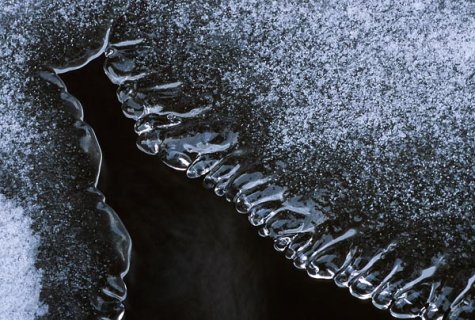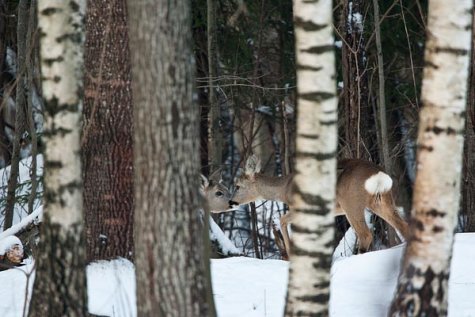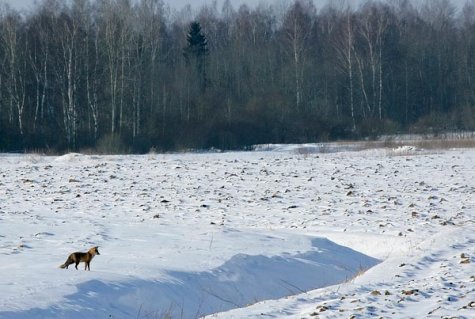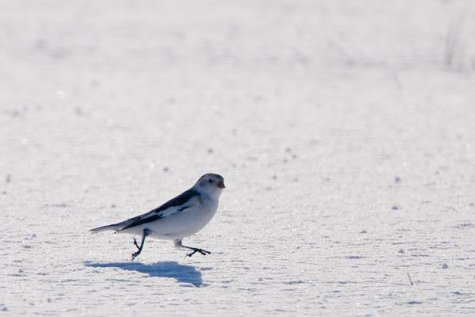Last Week of January: Speckles on Lake Ice
Text: Kristel Vilbaste
Photos: Arne Ader
Translation: Liis from Forum
Ice teeth.
The white snowy expanses of Peipsi are speckled with small black dots, particularly where the stones reached above the water surface in summer or as hidden reefs were a danger to boatsmen. Burbot fishing is on.
The four weather signs of the week:
Burbot fishing,
willow catkins,
tit calls and
thaw.
Each morning we take a walk along the lake shore to watch the fishermen. Across a summertime neighbour’s yard the fishermen have trampled an icy-hard sledge path; at the other end of it are the men with their kick-sledges outlined in black against the snow. Every now and then they flail around, then lie down again for a long time flat on their stomachs on the ice or on the sledge. According to the long-time locals here burbot fishing goes on out there, but they turn up their noses at eating burbot : “They used to make sült, fish in aspic from it, that enormous head made up a third of the fish, and rather poor-tasting the fish was too – but in old times the lakeshore people always found something to eat from the lake.” The fishermen fish around the rocks because burbots like to spawn in between stones. And it is spawning time for this, our only freshwater cod family species. The lake ice itself has large puddles of water on it each morning, and motor sledges race across the white snow. There is a crunching crust on the snow from the nighttime frost.
Roe deer.
Gardening deer
The thaw periods between the frosts set the buds of the trees in the garden growing, the buds on the apple trees were suddenly quite red. Under alders the ground was yellow from the thaw-water dripping from the trees. Crack willows showed pretty small white willow catkins. And although our garden is visited by only one roe deer this year instead of three, the shoots of the apple tree are now all carefully pruned. This year’s sage bed, next to the strawberries, has set Mr. Buck seriously sneezing and the strawberries are still untouched, but all cabbage remnants have been gobbled up. Kaja Kübar says that the large herds of deer are dispersing and the animals keep in groups of two or three, or even alone. The man-provided dining tables of crows also seem to have dried up, all turfs brought out by the thaw, and the seaweed banks on the shore have been carefully rooted through. Hares have not appeared in the garden yet, and may even not do so at all, because on the snow fox tracks are the most abundant.
Winter landscape with fox.
Honey bees and others on wings
The thaw made the honeybee colony happy too; they carefully carried out all perished relatives outside the hive. Besides the honeybees I also found my tits again: a largish flock had moved to the summerhouse a little bit farther away, where the owners come for skiing on the weekends and have put up a bird feeder heaped with sunflower seed at the window. All tits were busily rehearsing their spring songs last week; one great tit steadily whirrs his territory call when I go to fetch the mail. Mikk Sarv adds that küünlapäev, Candlemas day, on February 2nd was the beginning of spring time reckoning for people of old –the weeks were counted until midsummer day, starting from this day. Ravens croak loudly, but to start with only one by one. In the birdwatching discussion lists people write of large flocks of starlings in Harjumaa, these would be wintering birds. At the same time the snow buntings, these small white birds, have spread all over Estonia.
Snow bunting.
Sleepless hedgehogs
The winter of this year does not suit hedgehogs well, again and again messages arrive at the animal rehabilitation centre of some hedgehog’s excursions in the snow, Kaja Kübar says. But all have managed to stumble back to sleep. The little orphaned bear cubs grow stronger all the time in the rehabilitation centre. They are already clamouring loudly for food and show their muscles in the struggle with the feeding bottle so that the feeder is kept busy: “They really want their food, but it is necessary to demonstrate one’s strength, and struggle. Sometimes it is a fight to get the milk ration to go into their stomachs”. And in the sheephouse the ewes are having their lambs.
Snow crunch!
I cannot get out of the habit of munching little bites of snow in winter thaws. Maybe this bite, full of melting snow water, is a kind of energy boost that gets plants to grow in spring, and makes people happier. Try for yourself!
FOR CHILDREN
Candle script
A neat idea for Candlemas day, küünlapäev, is to make postcards where you write some sentence with a candle stub: “You are my best friend!“, “Let’s go skiing!” and so on. The receiver of the card must find the writing on the card by brushing it with beetroot juice or watercolour paint. Earlier, pieces of potato were used too for writing secret messages – if paper with such writing was heated over a candle flame, the writing emerged as if by magic.
Quotation:
Remember your ancestors when you light the candle on Candlemas!












